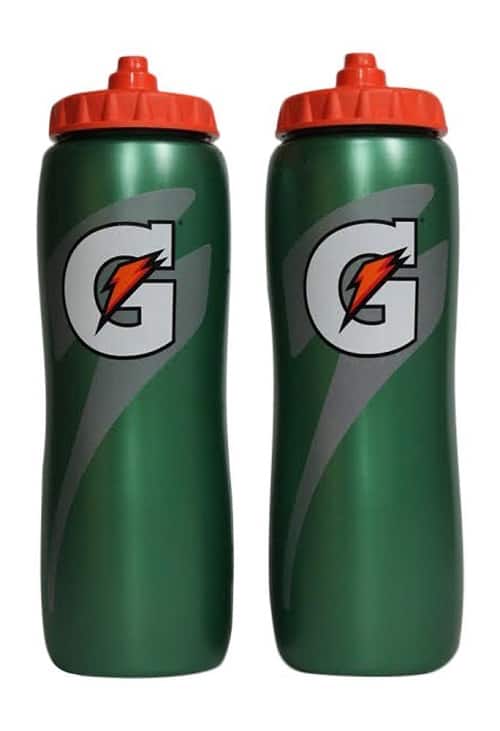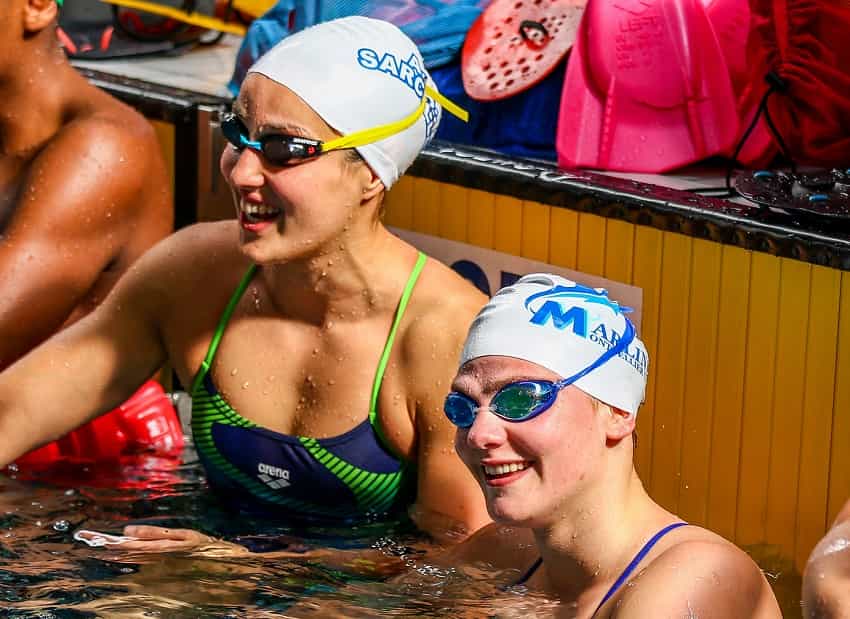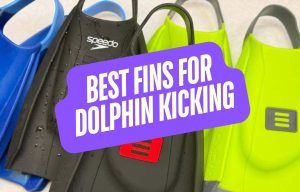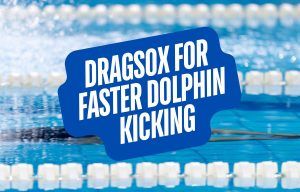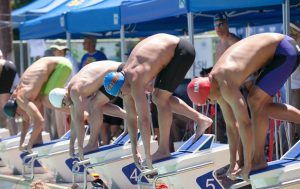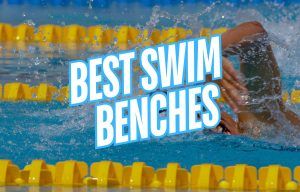Even though swimming looks like a sport that requires a tiny amount of swimming equipment–suit, goggles–there are actually a few essentials that you will find in the bag of your local competitive swimmer.
Whether it’s equipment to help you become a stronger swimmer, protect your eyes and hair from chlorine, or feed the legendary swimmer’s appetite, there are plenty of things to pack into your bag when you head on down to the pool.
When it comes to the essentials, here is what is in my swim bag.
The bag itself.
My current swim bag isn’t made by one of the traditional swimming companies. I know, I know—a lifelong swimmer not using a Speedo/Arena/TYR bag? I’ve gone through all the Speedo bags, from duffel bags to the exceptionally popular Speedo Teamster bag. And liked them fine.
But I wanted to try something different last year—leading me to pick up an Under Armour Undeniable Duffel bag.
This thing is huge and is a perfect bag for swimmers, storing the vast amounts of wet and dry gear required for a successful swim workout.
The bag water-proof, with separate compartments for my gear, a little pocket for valuables, large compartments at both ends of the bag, etc. I wanted a waterproof bag that would carry all my swim and my gym gear.
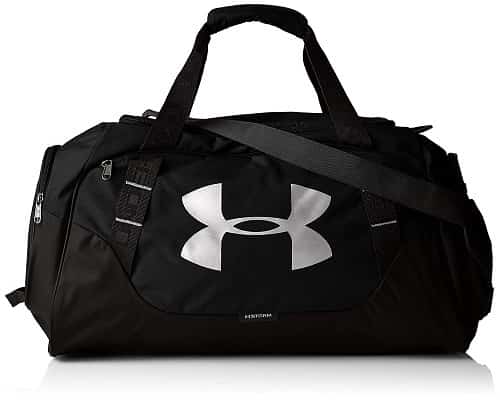

The mesh bag in the swim bag.
While the swim bag carries everything I am taking to the pool (and gym), the mesh bag carries everything I am taking with me to my lane.
All the tools that I am going to play with over the course of my workout, from my paddles, pull buoy, band, swimmer’s snorkel and fins live in my mesh bag.
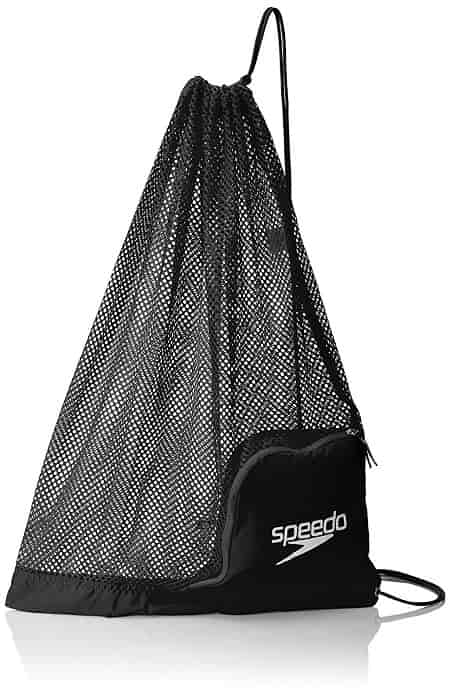

Swim goggles.
Besides the swimsuit, a pair of goggles is the only other real must. And I say must, because it keeps harmful chloramines from your eyes and help you see other swimmers and the wall (safety first!).
I’ve gone through a large number of goggles over the years, but have landed on a few that play heavy in my rotation.
The old-school, classic Swedes are my favorite training goggles, with the Arena Cobra Ultra goggles my go-to competition goggles.
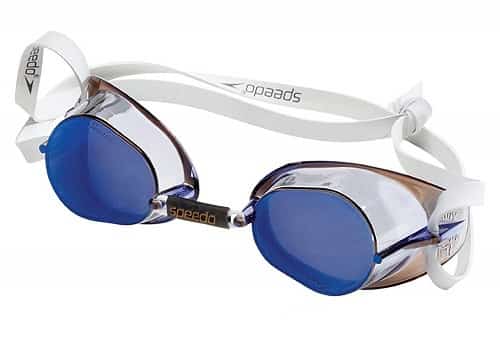

Ultimately, the best swim goggles you end up choosing come down to comfort, and don’t forget to pack a pair spare of goggles in your swim bag.
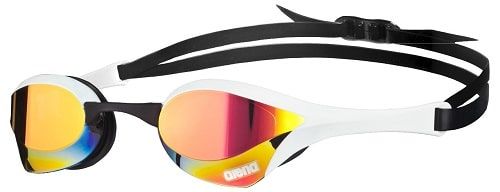

Mack’s Silicone ear plugs to keep water out of ears.
While this isn’t a must-have piece of swim gear for most swimmers, for me, a life-long sufferer of swimmer’s ear, having a pair of reliable ear plugs in my bag is essential.
I’ve tried every kind out there, from the $250+ customized ear plugs to the tree-shaped plugs. I have always come back to Mack’s Pillow Soft Silicone Ear Plugs, easily the best ear plugs for keeping water out when swimming.
Cheap, easy to mold to the shape of your ear, and virtually leak-proof, they have been my old reliable for longer than I care to count.
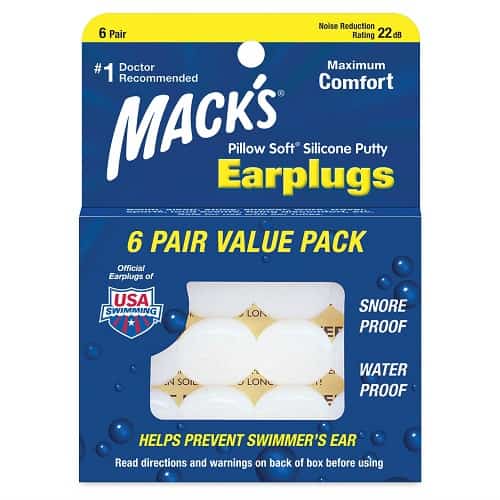

Micro-fiber towel for quick drying.
There is a lot of variety when it comes to something as simple as a swimmer’s towel. They take up very little space in my swim bag, dry quickly (especially handy at swim meets where you are getting wet often or you have two practices in one day) and are dirt cheap.
Micro-fiber towels are a nice balance between the big and thick cotton towels that you are more likely to find in your bathroom and the swimmer’s shammy that can be wrung out but doesn’t provide a ton of warmth.
Although they don’t match the comfort of a big, lush and comfortable cotton towel, the micro fiber towels are the way to go when loading up an already crowded swim bag.
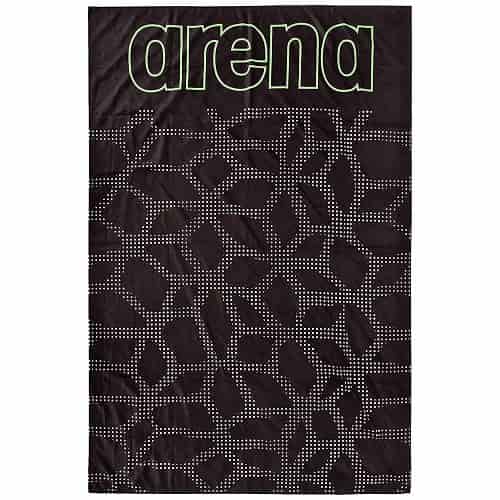

A power development tool of some sort.
I love swimming with resistance. Using a piece of resistance, whether it’s a pair of DragSox, resistance tubing, or my trusty weight belt, I always have some sort of resistance-based swim accessory in my swim bag.
Swimming slowly with resistance is one of my favorite ways to get my feel for the water into gear, and a couple quick power bursts with resistance during my pre-set recruits a ton of the same muscle fibers I will be using in the main set.
And of course, when it comes to developing brute strength in the water, swimming all-out under resistance can’t be beat.
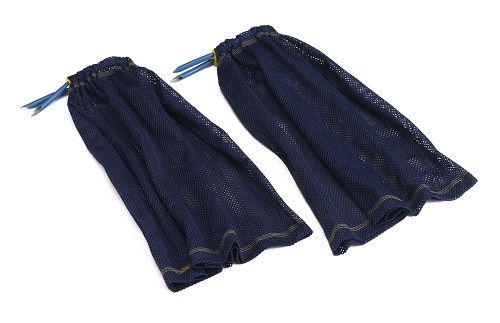
A logbook for journaling swim practices.
Tracking and logging your swim practices isn’t anything new or particularly exciting—on the face of it, at least. But monitoring your training (different from just logging) is super effective: you quickly learn how to improve faster, see patterns in your swimming, celebrate and reflect on your successes, and have an accountability buddy.
I’ve been logging my workouts since the age of 12, and in recent years got so obsessed with logging workouts that I created my own logbook for swimmers, YourSwimBook.
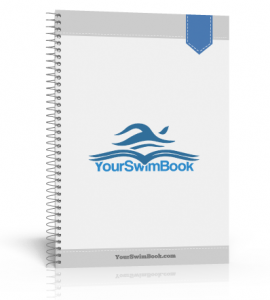
Fins.
Just as I enjoy swimming under load to help get things rolling for what is coming later in my workout, strapping on a pair of fins allows me to experience race-like speeds (and faster).
A good pair of fins are a swimmer’s best friend: when you get a good pair they don’t blister the crap out of your feet, can be worn for long periods of training comfortably, and don’t rip when you snap those ankles back and forth like a dolphin on meth.
Look for fins made of silicone—they last far longer than rubber and won’t blister your feet. My favorites are the DMC Elite fins and the Arena Powerfins.
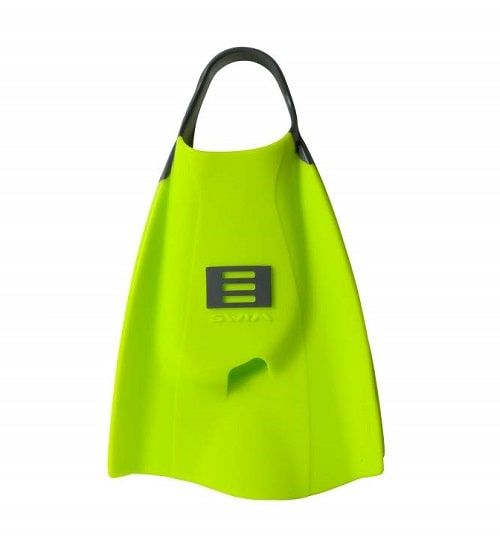

FINIS stability snorkel.
I’m a big fan of the swimmer’s snorkel. It’s a useful tool for balancing out your stroke, reinforcing better head and hip position, and it’s fun to loudly mouth-breathe through the mouth-piece like some sort of chlorinated Darth Vader.
My snorkel of choice?
The latest version of the classic FINIS Swimmer’s snorkel updates a classic by making the head mount much more comfortable, a mouth piece that can be twisted to the side when resting at the wall, and more resilient head straps.
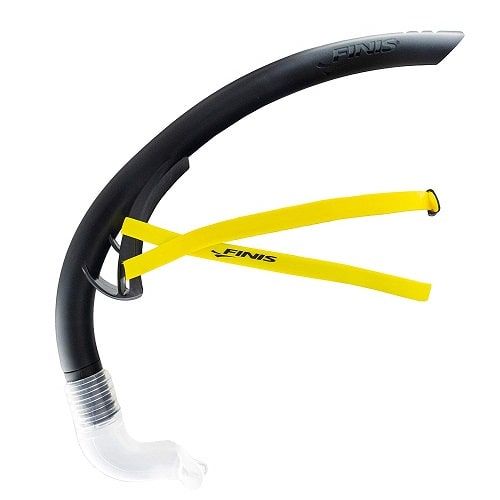

Post workout snack.
The swimmer’s appetite is legendary. The hunger pangs from those distance workouts and long hours in the pool can conquer salad-bowl sized portions of pasta in a single sitting.
But instead of waiting to get home to begin the process of refueling your chlorinated engine, put down a post-workout snack. My go-to has always been the simple combination of a banana and a whey protein shake (mixed with plain-old water).
Water bottle.
Swimmers sweat. They do. Really.
It might not be as obvious as when you go to the gym and do a 60-minute spin class in a grey shirt, but it’s happening, lap after lap, as our body, like a furnace, burns off steam and sweat as we pound away the meters.
As an athlete being properly hydrated is about as simple a thing as it gets, but you would be surprised at how often swimmers forget this super basic piece of gear when they stroll out onto the pool deck.
Have a water bottle in the car. A water bottle in your locker at school. Tape one to your goggles, if necessary.
